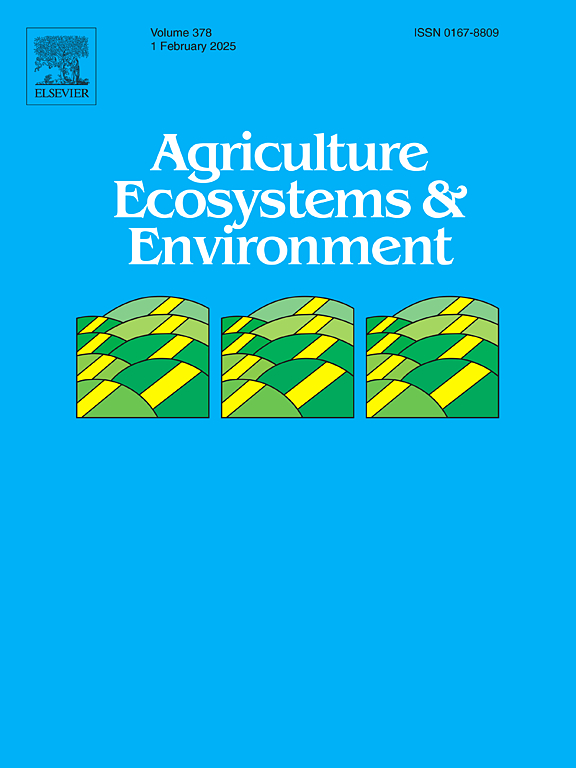Livestock grazing increases soil bacterial alpha-diversity and reduces microbial network complexity in a typical steppe
IF 6.4
1区 农林科学
Q1 AGRICULTURE, MULTIDISCIPLINARY
引用次数: 0
Abstract
The preservation of biodiversity and the proper functioning of grassland ecosystems depend on our ability to understanding the effects of livestock grazing on soil characteristics and microbial communities. However, how soil microbial communities— including their diversity, composition, and network complexity—respond undergo change in response to increasing grazing intensity in typical grasslands remains unclear. To address this, a meticulously designed, ten-year controlled experiment was conducted in a typical grassland in Inner Mongolia to investigate changes in the soil microbial community under increasing grazing intensity. The results showed that grazing significantly affected the structure and composition of soil microorganisms, leading to a significant decrease in bacterial β-diversity with increasing grazing intensity. In contrast, bacterial α-diversity significantly increased, while fungal α-diversity remained largely unchanged. However, higher grazing intensities reduced soil multifunctionality and network complexity, with stronger effects on bacteria. These findings enhance our understanding of how grazing intensity influences microbial communities and provide a theoretical basis for assessing grazing’s impact on grassland soil ecosystems, thereby addressing a critical knowledge gap regarding its effects on subsurface ecosystems.
在典型的草原上,放牧牲畜增加了土壤细菌的多样性,降低了微生物网络的复杂性
生物多样性的保护和草地生态系统的正常运作取决于我们对牲畜放牧对土壤特征和微生物群落影响的理解能力。然而,在典型草原中,土壤微生物群落(包括其多样性、组成和网络复杂性)如何响应放牧强度增加的变化尚不清楚。为了解决这一问题,在内蒙古典型草原进行了精心设计的10年对照试验,研究了放牧强度增加对土壤微生物群落的影响。结果表明,放牧显著影响了土壤微生物的结构和组成,导致细菌β-多样性随着放牧强度的增加而显著降低。细菌α-多样性显著增加,真菌α-多样性基本保持不变。然而,较高的放牧强度降低了土壤的多功能性和网络复杂性,对细菌的影响更强。这些发现增强了我们对放牧强度如何影响微生物群落的理解,并为评估放牧对草地土壤生态系统的影响提供了理论基础,从而解决了放牧对地下生态系统影响的关键知识空白。
本文章由计算机程序翻译,如有差异,请以英文原文为准。
求助全文
约1分钟内获得全文
求助全文
来源期刊

Agriculture, Ecosystems & Environment
环境科学-环境科学
CiteScore
11.70
自引率
9.10%
发文量
392
审稿时长
26 days
期刊介绍:
Agriculture, Ecosystems and Environment publishes scientific articles dealing with the interface between agroecosystems and the natural environment, specifically how agriculture influences the environment and how changes in that environment impact agroecosystems. Preference is given to papers from experimental and observational research at the field, system or landscape level, from studies that enhance our understanding of processes using data-based biophysical modelling, and papers that bridge scientific disciplines and integrate knowledge. All papers should be placed in an international or wide comparative context.
 求助内容:
求助内容: 应助结果提醒方式:
应助结果提醒方式:


